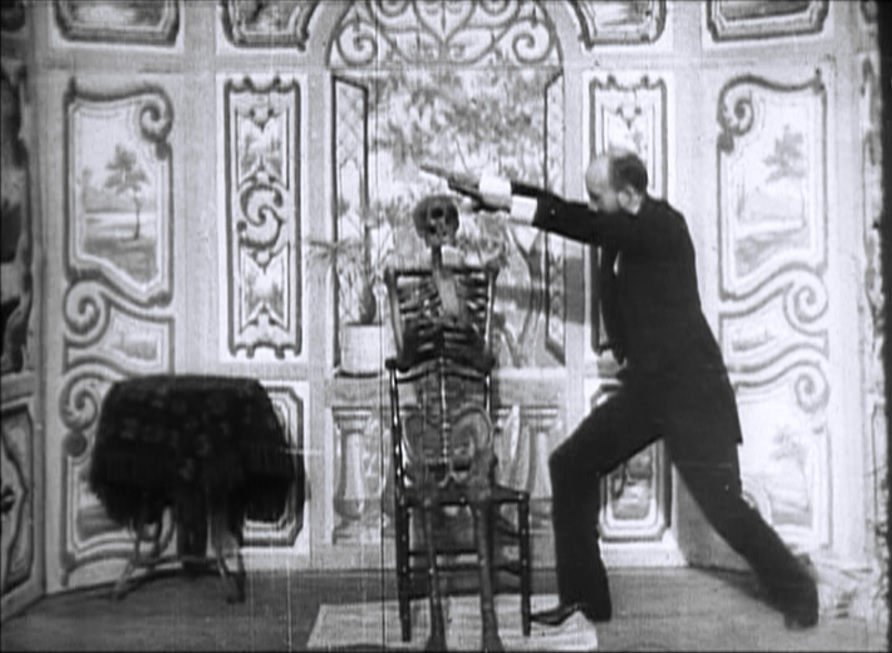The Vanishing Lady (1896)
The Vanishing Lady or The Conjuring of a Woman at the House of Robert Houdin (French: Escamotage d’une dame chez Robert-Houdin) is an 1896 French short silent trick film directed by Georges Méliès.
Plot
A magician walks onto a stage and brings out his assistant. He spreads a newspaper on the floor (thus demonstrating that no trap door is hidden there) and places a chair on top of it. He has his assistant sit in the chair, and spreads a blanket over her. When he removes the blanket, she has disappeared. He then waves his arms in the air and conjures up a skeleton. He places the blanket over the skeleton and removes it to reveal his assistant, alive and well.
Production
Méliès himself is the magician in the film; his assistant is Jehanne d’Alcy.
The film is based on a magic act developed by the French magician Buatier de Kolta. When the illusion was produced onstage, a trapdoor was used to create the appearances and disappearances; for the film, however, Méliès needed no trapdoor, using instead an editing technique called the substitution splice. The Vanishing Lady marks Méliès’s first known use of the effect.
Release
The Vanishing Lady was released by Méliès’s Star Film Company and is numbered 70 in its catalogues. Though the surviving print of the film is in black-and-white, hand-colored prints of Méliès’s films were also sold; the Méliès expert Jacques Malthête reconstructed a hand-colored version of the film in 1979, using authentic materials.





